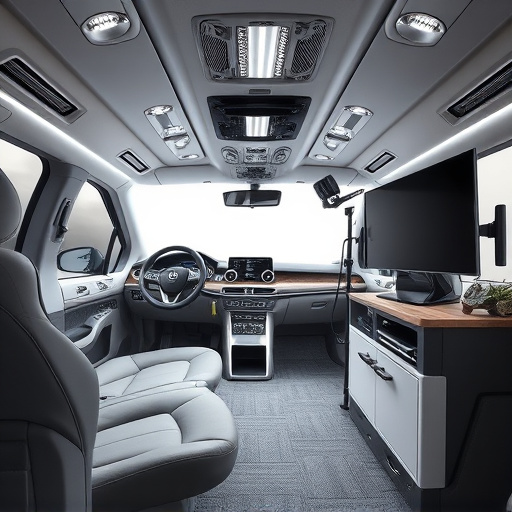Controlled testing environments are essential for accurately evaluating cold air intake (CAI) systems in automobiles. By using specialized equipment and simulating real-world conditions, engineers can measure key metrics like airflow rates, temperature drops, and pressure differentials. This meticulous process enables design improvements, ensures product quality, enhances engine performance, contributes to fuel efficiency, and reduces emissions, making it a critical aspect of modern automotive development. To ensure accurate results, stringent control measures are implemented to maintain a consistent isolated environment, including temperature stability, calibrated instruments, efficient airflow management, and proper ventilation.
In the pursuit of precision and reliability, controlled testing environments play a pivotal role in automotive engineering, particularly when evaluating crucial components like cold air intake (CAI) systems. This article delves into the intricacies of these environments, focusing on “cold air intake performance testing methodology.” We’ll explore how meticulously crafted settings ensure accurate assessments, starting with foundational concepts and progressing to best practices for optimal results.
- Understanding Controlled Testing Environments: The Foundation of Accurate Performance Evaluation
- Cold Air Intake Performance Testing: A Methodology Deep Dive
- Optimizing Results: Best Practices for Maintaining Environmental Control During Testing
Understanding Controlled Testing Environments: The Foundation of Accurate Performance Evaluation

Controlled testing environments are crucial for accurately evaluating the performance of automotive components, especially in the context of cold air intake (CAI) systems. These environments provide a stable and measurable setting, free from external variables that could skew results. By controlling factors like temperature, humidity, and pressure, engineers can ensure that CAI performance testing is consistent and reliable. This meticulous approach allows for the collection of precise data, enabling informed decisions about design improvements and product quality.
In the realm of CAI performance testing methodology, controlled environments facilitate the measurement of key metrics such as air flow rates, temperature drops, and pressure differentials. This data is then used to benchmark different CAI designs, identify bottlenecks, and optimize overall system efficiency. Such meticulous testing not only enhances engine performance but also contributes to fuel efficiency and emissions reduction, making it a fundamental aspect of modern automotive development.
Cold Air Intake Performance Testing: A Methodology Deep Dive

Cold Air Intake Performance Testing is a meticulous process that involves evaluating the efficiency and effectiveness of a vehicle’s cold air intake system. This methodical deep dive delves into the intricate dynamics of airflow, temperature, and pressure within the engine bay. By simulating real-world driving conditions in a controlled setting, engineers can measure key performance indicators like flow rate, density, and temperature difference across various operating scenarios.
The testing methodology leverages specialized equipment, such as flow meters, thermocouples, and pressure sensors, to capture precise data points. These instruments are strategically placed at critical locations along the intake tract, allowing for a comprehensive analysis of air movement. This detailed insight enables fine-tuning of components like air filters, intakes, and sensors, ultimately optimizing engine performance, fuel efficiency, and overall vehicle dynamics.
Optimizing Results: Best Practices for Maintaining Environmental Control During Testing

To optimize results during controlled testing environments, especially in performance testing methodologies like cold air intake testing, maintaining a consistent and isolated environment is paramount. This involves implementing stringent control measures to prevent external variables from influencing the test outcomes. For instance, ensuring temperature stability within the testing chamber is crucial for accurate data collection, as even subtle temperature fluctuations can impact component performance. Regular calibration of measuring instruments and meticulous record-keeping are best practices that help maintain environmental integrity.
Moreover, efficient airflow management is a key aspect of cold air intake performance testing. Testing facilities should employ advanced filtration systems to control the quality of air entering the chamber, removing any contaminants that could affect the accuracy of results. Additionally, proper ventilation ensures optimal conditions for repeated tests, minimizing the risk of variability caused by residual elements from previous trials. These practices collectively contribute to reproducible and reliable test outcomes, making them indispensable in achieving precise performance metrics.
Controlled testing environments play a pivotal role in accurately evaluating vehicle performance, especially when focusing on critical components like cold air intake systems. By understanding and implementing best practices detailed here, including deep dives into methodologies like cold air intake performance testing, professionals can ensure reliable data and optimized results. This approach is essential for both research and development, enabling the creation of more efficient and high-performing vehicles.














